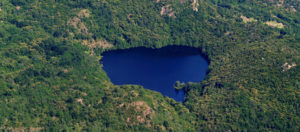
Global Warming and Climate Change
Many experts believe that this is the greatest threat our century will face. But what is climate change? Are climate change and global warming one and the same? No, there is a distinction between them, even though they are often spoken about interchangeably. Global warming refers to a significant and long-term increase in the planet’s temperature. It has become evident that the earth is heating up at a fast and steady pace.
It is postulated that the industrial revolution in the 18th century prompted the beginning of global warming as it is currently unfolding. This was a period of great change. Industries in Europe and the United States changed their manufacturing processes and began to produce commodities through machines, veering away from manual production. This shift caused the significant use of energy through the burning of fossil fuels, which is known to implicated in the heating up of the planet.
Climate change, on the other hand, refers to alterations in global climate patterns. It covers a much more extensive set of phenomena. Its primary cause is also the emission of ‘heat-trapping’ gases from the burning of fossil fuels. But, aside from this, climate change also refers to shifts in the behavior of the planet. A few alarming changes include the rise in sea levels and the loss of ice mass in the earth’s coldest regions. Plants and trees have also changed blooming and fruit-bearing seasons. Extreme weather conditions like heat waves and droughts are also occurring more frequently.
As a result of having the same root cause, the two terms are usually interchanged. But although their causes are the same, the physical manifestations are different. The emission of greenhouse gases causes global warming. While global warming causes climate change.
Some of the facts:
- The general consensus from leading environmental sources is that human activity is the greatest contributory factor to global warming and climate change. This has been concluded by looking at the data with regards to the warming trend, which began in the middle of the 20th century and still continues.
- Global temperatures have risen by 1.62 degrees Fahrenheit since the 19th century. Most of the rise has occurred in the last 35 years, with the 5 warmest years ever recorded occurring since 2010. Records show 2016 was the hottest year ever recorded. Eight of its 12 months (January to September, but excluding June) were also the warmest on record.
- 18 of the 19 hottest years the world has experienced have occurred since 2001.
- The oceans’ surfaces have absorbed most of the rise in heat. Records since 1969 have shown that in places the increase has been 0.4 degrees Fahrenheit – this increase in temperature has been found at depths of up to 700 metres.
- The glaciers and icebergs in Antarctica and Greenland have decreased in mass. In fact, data from NASA shows Greenland lost an average of 286 billion tons of ice per year between 1993 and 2016. Antarctica also lost about 127 billion tons of ice per year during that same period.
- Arctic sea ice shrank to its lowest level on record in 2012.
- Satellite data shows that the Earth’s polar ice sheets are losing 413 gigatons of mass per year.
- Global sea levels have risen by 8 inches since the last century but the rate of the rise in the last 20 years is double that figure and continues to increase every year.
- Since the onset of the Industrial Revolution, the oceans have increased in acidity by approximatelyt 30%. Scientists believe oceans’ surfaces absorb about 2 billion tons of carbon dioxide per year.
Also see: Soil, Soul and Society and The Plastic Pollution
